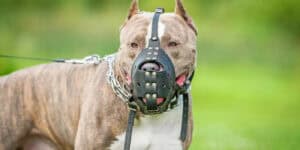
Dog Bites To Children
All pets inherit the potential to cause injuries. Biting and pulling is common with canine behavior and any dog, including your beloved pet, has the potential to bite and cause harm. In fact, according to recent research about dogs biting children, the most popular breeds were all pet-breeds. For example, English springer spaniels, German shepherds, golden retrievers, labradors, American cocker spaniels, etc., the dogs that have no such history of biting and causing injuries.
Playing and petting their dogs can be exciting and fun for many children. Even though many dogs seem to appear harmless and friendly, it is still important for parents to be cautious of the injuries caused by dog bites in children. Around 2% of the emergency department casualties are due to bite wounds, and dog bites hold most of these wounds in children. More than 30% of the time, dog bites in children are caused by their pets.
Why Does a Dog Bite?
Dogs are the most likely to bite when driven by pain or fear. This fear and pain are the most common triggers of dogs being aggressive towards children, especially preschoolers and toddlers, in the immediate or extended family, or the guests who visit at home. Even though adults are the majority of the victims of a dog’s bite, children get more severely hurt and are brought to the emergency department for bite injuries on the face and head more than adults. So what can be done regarding dog bites to minimize the risk and keep our children safe? Before getting to this question’s answer, let us first tell you a few misconceptions about dogs biting children and why children are at risk of dog injuries.
For a free legal consultation with a Personal Injury Lawyer
Why Are Children at Risk of Dog Bites?
Newborns or Infants
Whether awake or asleep, newborns are at significant risk of fatal attacks by dogs that resemble predatory behavior. The warning signs that you should observe in your dog include the following:
- Ears of the dog forwarded up.
- Hyper-alertness primarily focused on the baby.
- High pitched barking or whining.
- Poking or muzzled punching with a closed mouth at the baby.
- Jumping in or circling the infant.
Toddlers
Since toddlers become more mobile, like crawling, rolling over, walking, or climbing, this can be intimidating to their dogs. Although the dog has been familiar with the toddler for more than a year, the baby’s new mobility can make the dog nervous and cause him to react aggressively. The warning signs that you should look in your dog around toddlers include:
- Growling at the child if he approaches the dog.
- Walking away from the baby.
- Showing anxiety signs like lip-licking, lifting foreleg, looking away, lowering head or body, etc.
Pre-school/Young-aged Children
Children of preschool age are too young to follow any safety precautions and are fast-moving, hyperactive, playful, loud, and impulsive to their dogs. They are most likely to do things to their dogs like disturbing the dog, hugging, holding its head, or even teasing the dog. Therefore, toddlers of this age are the most likely to be at risk for dog bites. From the dog’s point of view, a hyperactive, hugging, and playful toddler is a threat towards the dog, provoking defensive aggression. The warning signs may include:
- Growling.
- Walking away.
- Lip-licking.
- Attempting to look away.
Older Children
Older children aged 6-10 are more likely to get bitten by dogs they are not familiar with, such as street dogs. In this case, the dog might not allow observing any warning signs. Therefore, it is essential to emphasize educating your children regarding the safety measures around dogs.
Common Myths Regarding Dog Safety
Despite that every 7 out of 10 houses are pet-centered with most dogs, there is still a lack of knowledge among both dog owners and parents related to safety practices. Following are a few myths regarding dogs and children.
Myth 1. Dogs that have lived with children since they were puppies would not bite them as adults.
The most common reasons for a pet dog biting family children include pain, resource guarding, fear, and some provocative interactions like children hugging or holding them. Socializing these dogs as puppies is not the ultimate solution because it will not prevent the dog from resource guarding its food, about which many dogs are the most insecure. Therefore, many dogs would be comfortable around children as puppies but react aggressively if startled, hurt, or significantly scared.
Myth 2. If the dog is comfortable around adults, it will be the same around children.
Many dogs take juvenile humans like babies, infants, and toddlers, much differently than adults. This is because children have different behavior than adults, of course, in terms of their voice, mobility, and way of interaction. Therefore, dogs may feel worried around children and are more likely to bite them because the growing children appear entirely different from adults, even in size.
Myth 3. A child knows how to be gentle around dogs, so there is nothing to worry about.
As we had mentioned earlier, affectionate and gentle interactions like hugging, petting, touching, and kissing the dog may trigger aggression, thus resulting in a dog bite. Just like humans, every dog is different. It is not necessary if your pet dog is gentle with your child, other dogs would also react the same.
Myth 4. If the dog is not a pit bull breed, the children are safe near it.
Wrong. Any dog breed can bite a child. Biting behavior has nothing to do with the dog’s breed. And unfortunately, no dog, either a pet or stray, is child bite-proof.
Personal Injury Lawyer Near Me
What To Do If Your Child Gets Bitten By A Dog?
For minor abrasions and scrapes, you should thoroughly clean your child’s wound with soap and warm water. Keep the wound covered with a bandage after applying an antibiotic ointment. You should seek immediate medical attention if you notice a severe injury that shows the following signs:
- The wound has torn the skin apart.
- It is still bleeding, even after applying pressure for more than 10 minutes.
- The bones, joints, or tendons might have gotten hurt.
- The injury is located on the face, neck, head, hands, or feet.
- The wound appears severely infected.
- It has happened to a child with weak immunity.
Click to contact our Personal Injury today
What Kind Of Care To Expect In The Emergency Department?
In addition to extensive cleansing, children suffering from dog bite injuries require extra medical evaluation and treatment. When you take your kid to the emergency department, you should expect the following care:
- Most children with lacerations and deeper cuts require stitches. However, you need to mention how old the wound is to the doctor. This is because injuries that are more than 12 hours old, at higher risk of infections, and severe wounds like puncture or crush wounds on the hands and feet, should not be closed with stitches. The doctor would instead leave it open to heal faster. You should refer to a plastic surgeon for such wounds to discuss scar revision and wound healing.
- Children with injuries in the bones, tendons, or joints will require surgical consultation and an X-ray. For more severe injuries, your child might be taken to the operating room for irrigation, exploration, and repair of the wound.
To prevent the bite infection from further spreading, the doctor would prescribe an antibiotic for 3-4 days to the children with a weak immune system or those with poor wound-healing speed. If your child has not received previous tetanus injections thrice in five years, the doctor might prescribe it to the children with deep cuts and lacerations.
Should You Be Worried About Rabies?
Fortunately, the chances of rabies are meager as dogs account for only 3% to be the cause of animal rabies. Immunization from rabies is usually not required if the wound is given from a healthy and familiar dog with a known owner like family or friends. However, all dog scratches and bites should be accessed for risks individually and reported to the animal control center as soon as possible. The authorities would investigate the dig bite case and determine if the dog needs to be kept under observation or euthanized for rabies testing.
Things To Remember
Although dogs prove to be the greatest of companions, they are still animals and keep the potential of biting those whom they see as threats. Therefore, it is essential to keep your children safe by following some safety tips that include:
- The babies and children should never be left alone with a dog, even a known one.
- Never allow your children and toddlers to go near the dog and pet or hug them if it is sleeping or resting.
- Educate your older children on how to keep themselves safe near dogs.
- Teach your kids to not to approach an unknown dog or try to show affection by climbing through the fence.
- Train your children to always ask for permission from you or any other dog’s owner before going near it or before trying to pet them.
- When you take your dog out in public, always make sure that you leash your dog so that it stays in your control, even if its behavior goes terrible.
How The Jackman Law Firm Can Help
In most cases, an anxious dog is more inclined towards responding defensively to a toddler’s behavior than an adult’s interaction. Therefore, the safety of toddlers and children with dogs and vice versa requires an adequate understanding of canine behavior and body language so that any kind of risky and unsafe interaction is avoided and, in ideal conditions, entirely eliminated.
The attorneys at The Jackman Law Firm can help you get the money you need for your child’s medical bills, pain and suffering, and the cost of future medical care.
We Are committed to winning and winning big for our clients



